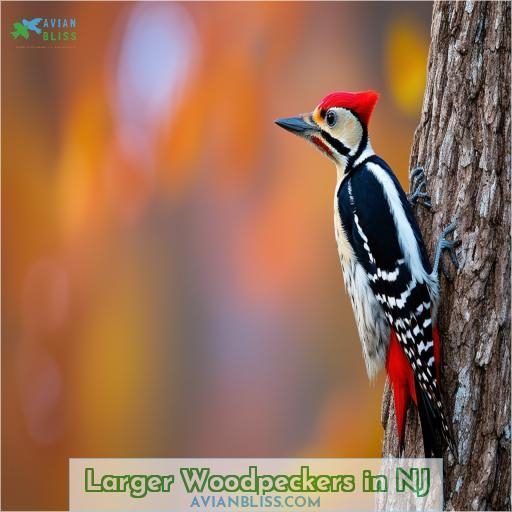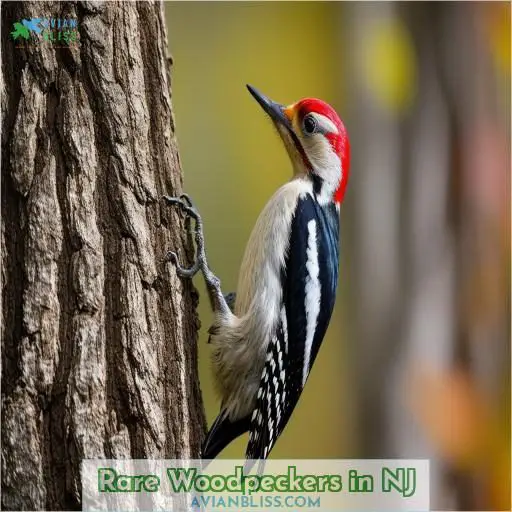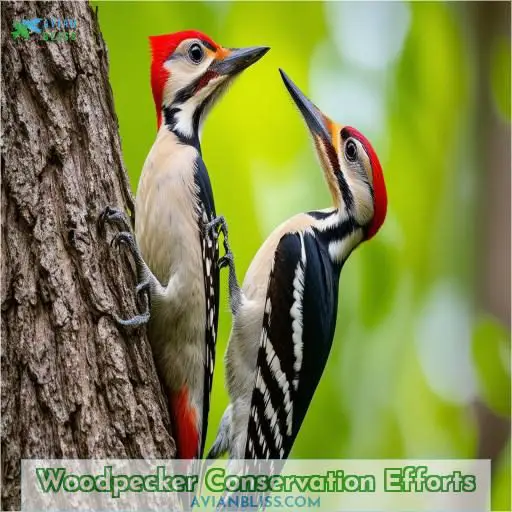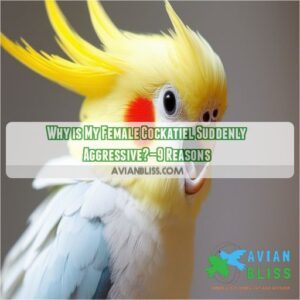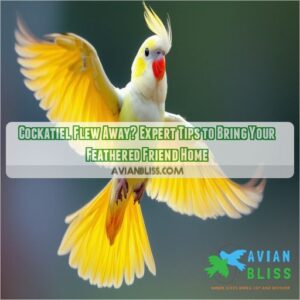This site is supported by our readers. We may earn a commission, at no cost to you, if you purchase through links.
 Are you ready to explore the rhythmic wonders of New Jersey’s woodpeckers? These avian carpenters come in a variety of sizes and distinctive markings, from the tiny black-and-white Downy to the stunning crimson-crested Pileated.
Are you ready to explore the rhythmic wonders of New Jersey’s woodpeckers? These avian carpenters come in a variety of sizes and distinctive markings, from the tiny black-and-white Downy to the stunning crimson-crested Pileated.
You’ll find them in diverse habitats. Northern Flickers prefer open areas, while Hairy Woodpeckers thrive in mature forests.
Their drumming patterns and "wicka-wicka" calls are nature’s symphony. While common species abound, keep an eye out for rare visitors like the Yellow-bellied Sapsucker.
To uncover more rhythmic secrets of these feathered drummers, let’s investigate further.
Table Of Contents
- Key Takeaways
- Common Woodpeckers in NJ
- Larger Woodpeckers in NJ
- Woodpeckers With Distinctive Markings
- Woodpecker Identification Guide
- Rare Woodpeckers in NJ
- Seasonal Variations in Woodpeckers
- Threatened Woodpecker Species
- Woodpecker Conservation Efforts
- Attracting Woodpeckers to Your Yard
- Frequently Asked Questions (FAQs)
- What is the largest woodpecker in NJ?
- What is the difference between a woodpecker and a sapsucker?
- Are woodpeckers common in NJ?
- What woodpecker has a red head in NJ?
- How do woodpeckers avoid brain damage from pecking?
- What role do woodpeckers play in forest ecosystems?
- How do woodpeckers find and access insect prey?
- Are woodpecker populations affected by climate change impacts?
- What courtship and nesting behaviors do woodpeckers exhibit?
- Conclusion
Key Takeaways
- Picture yourself on a peaceful forest hike, the rhythmic drumming of a woodpecker echoing through the trees like nature’s own percussion section. These "feathered carpenters" leave their mark with every tap, excavating nesting cavities and uncovering insect delicacies with their chisel-like beaks.
- From the striking crimson crest of the Pileated Woodpecker to the understated elegance of the Downy, New Jersey’s woodpeckers come in a colorful array of shapes and sizes. Keep your eyes peeled and ears perked for their distinct calls and markings – they’re like avian fingerprints!
- Don’t be fooled by their industrious appearances; woodpeckers play a vital role in forest ecosystems. Their excavations provide cozy homes for other wildlife, and their appetite for wood-boring insects helps keep trees healthy. These feathered friends are nature’s ultimate multitaskers!
- While some species like the Downy and Red-bellied Woodpeckers are common backyard visitors, others like the elusive Black-backed Woodpecker require a keen eye and a bit of luck to spot. But whether common or rare, every woodpecker sighting is a treat – a front-row seat to nature’s rhythmic wonders.
Common Woodpeckers in NJ
You’re likely to spot four common woodpeckers in New Jersey’s varied habitats:
The diminutive downy woodpecker with its black-and-white plumage.
The larger Hairy Woodpecker resembling its downy cousin.
The northern flicker with its distinctive black bib and spotted belly.
The red-bellied woodpecker sporting a vibrant crimson patch.
These frequent feathered visitors provide an audible and visual connection to nature’s rhythms through their drumming and acrobatic foraging behaviors.
Downy Woodpecker
The downy woodpecker, small yet distinctive, dons a black and white plumage. Common in New Jersey’s forests, you’ll spot these feathered friends:
- Clinging to tree trunks, probing for insects
- Excavating nest cavities with their chisel-like beaks
- Attracted to suet feeders in your backyard
- Announcing their presence with a high-pitched "pik" call
- Bringing life to the woodlands with every tap.
Hairy Woodpecker
You’ll spot the Hairy Woodpecker enthusiastically drilling into trees, foraging for its favorite insect meals. Listen for its sharp, high-pitched calls echoing through woodlands. Promoting dead tree preservation aids in guaranteeing their continued presence, allowing nature’s rhythmic wonders to persist.
Northern Flicker
You’ll spot the Northern Flicker, a medium woodpecker with:
- Black-bib and spotted belly
- Red on head, yellow on wings/tail
- Spends time foraging on the ground
Keep an eye out for this charismatic backyard visitor while birding or enjoying your feeders.
Red-bellied Woodpecker
Speaking of common sightings, you’ll likely encounter the red-bellied woodpecker. Despite its name, this cavity-nester sports a pale red belly and barred black-and-white wings. Listen for its distinctive rolling call while it forages for insects.
Larger Woodpeckers in NJ
You’ll encounter two larger woodpeckers among New Jersey’s feathered residents:
- The Northern Flicker, a brown beauty with black bars, white rump, and spotted breast, frequents various habitats.
- The Pileated Woodpecker, a striking black bird with white face stripes and red crest, reigns over mature forests.
These magnificent birds leave distinctive rectangular holes as they forage for insects and carve out nesting cavities. Their ringing calls and drumming rhythms add music to nature’s symphony. Witnessing these feathered carpenters at work is a true delight.
Woodpeckers With Distinctive Markings
Amidst the diverse array of woodpeckers in New Jersey, several species boast distinctive markings that set them apart.
You’ll recognize the hairy woodpecker males, northern flicker (yellow-shafted subspecies), pileated woodpecker males, and red-headed woodpecker by their striking red markings.
While the downy and hairy woodpeckers display bold black and white plumage.
The northern flicker and red-headed woodpecker sport unique head patterns.
Red Markings
Spotting a flash of red amid the foliage? You may have encountered a woodpecker with distinctive red markings. Feast your eyes on these vibrant beauties:
| Species | Red Markings | Other Key Features |
|---|---|---|
| Red-headed Woodpecker | Entire head and neck bright red | Black back, white underparts |
| Northern Flicker (Yellow-shafted) | Red crescent on nape | Black "bib," spotted underparts |
| Pileated Woodpecker (Male) | Flaming red crest | Black body, white stripes on face |
| Hairy Woodpecker (Male) | Red patch on nape | Black and white plumage |
Their fiery hues will leave you mesmerized!
Black and White Markings
Speaking of distinctive markings, you’ll immediately spot the black and white plumage of woodpeckers like the:
- Downy Woodpecker
- Hairy Woodpecker
- Red-cockaded Woodpecker
These high-contrast patterns act as nature’s camouflage, helping them blend seamlessly into tree bark. Keep an eye out for these striking avian artists adorning our woodlands.
Unique Head Markings
While many woodpeckers sport black and white plumage, you’ll find distinct head markings that set them apart. Marvel at the Northern Flicker’s "whisker" markings, or the Red-headed Woodpecker’s vivid crimson crown. Observe these unique features:
| Species | Head Shape | Beak Color | Eye Size |
|---|---|---|---|
| Flicker | Slender | Curved | Large |
| Red-head | Round | Stout | Medium |
| Pileated | Crested | Chisel | Small |
With practice, these striking head patterns become unmistakable field marks.
Woodpecker Identification Guide
To identify woodpeckers, observe their size and plumage.
Downy and hairy woodpeckers are small to medium-sized with distinctive black and white feather patterns.
While larger species like the pileated woodpecker sport striking crests and bold markings.
Note their habitat preferences too.
Northern flickers frequent open areas, foraging on the ground.
Whereas pileated woodpeckers reside in mature forests, announced by their ringing calls.
Size and Plumage
As you marvel at a woodpecker’s intricate plumage, you’ll notice their beaks are perfectly adapted for foraging and excavating cavities. Their anatomy reflects their unique foraging techniques, like chisel-like beaks for bark stripping and sturdy tails for vertical climbing. Observing these feathered carpenters will deepen your appreciation for Nature’s ingenious designs.
Habitat Preferences
In your quest to identify woodpeckers, pay close attention to their preferred habitats. While some thrive in mature forests with dead and decaying trees, others have adapted to urban environments. This habitat diversity showcases their resilience, highlighting their important ecosystem services. However, climate change poses challenges, altering habitats and potentially facilitating disease transmission.
Calls and Sounds
Imagine yourself on a quiet forest hike, when suddenly you hear a rhythmic drumming echoing through the trees.
That’s a woodpecker’s unique call—a way of signaling territory and attracting mates.
From the rapid tapping of a Downy to the piercing "wicka-wicka" of a Northern Flicker, each species has distinctive drumming patterns and vocalizations revealing their ecological roles as forest health indicators and cavity excavators.
Listen closely—woodpecker calls offer insights into their remarkable adaptations.
Rare Woodpeckers in NJ
While the Downy, Hairy, Northern Flicker, and Red-bellied Woodpeckers are common sights across New Jersey, several rarer woodpecker species grace the state’s forests with their presence. The Yellow-bellied Sapsucker, Red-headed Woodpecker, Black-backed Woodpecker, and American Three-toed Woodpecker are elusive birds that birders actively seek out, each with its distinct plumage, behaviors, and habitat preferences.
Yellow-bellied Sapsucker
Speaking of rare woodpeckers, have you seen the yellow-bellied sapsucker? Its black and white plumage, with a yellow-wash belly, is striking.
- Sapsuckers drill rows of small holes in tree bark to lap up sap
- They nest in cavities excavated in deciduous or mixed forests
- These migratory birds arrive in spring and head north by summer
Red-headed Woodpecker
You’ll be lucky to spot this woodpecker’s striking red head and black-and-white plumage. Once common, habitat loss has severely reduced their numbers, making this threatened species a rare sight. Attract them with suet and peanuts at your feeder while supporting conservation efforts to protect their dwindling habitats.
Black-backed Woodpecker
Rare New Jersey sightings, the Black-backed Woodpecker, with its striking black plumage and white stripes, favors coniferous forests. Safeguarding this elusive species requires conservation efforts to protect its preferred habitat.
American Three-toed Woodpecker
Rounding out our rare woodpeckers is the elusive American Three-toed Woodpecker. With its:
- Striking black and white plumage
- Distinctive three-toed feet
- Rare status in coniferous forests
- Limited range and distribution
- Uncertain conservation outlook
This unique species remains an enigmatic sight for NJ birders. Cherish any encounter you have!
Seasonal Variations in Woodpeckers
You’ll notice seasonal shifts in the woodpecker species present in New Jersey. During the breeding season, from spring through summer, the striking red-headed woodpecker becomes more commonly seen as it arrives to nest. On the other hand, winter visitors like the yellow-bellied sapsucker pass through the state on their way to more northern breeding grounds.
Breeding Season
Ah, the breeding season brings a delightful change in woodpecker behavior! You’ll spot males flaunting their vibrant red crests, drumming incessantly to attract mates. Their nesting habits demand your attention:
| Species | Nesting Site | Clutch Size | Incubation Period |
|---|---|---|---|
| Downy | Tree Cavities | 4-5 Eggs | 12-13 Days |
| Hairy | Tree Cavities | 4-5 Eggs | 12-13 Days |
| Flicker | Tree Cavities | 6-8 Eggs | 11-16 Days |
| Pileated | Large Trees | 3-5 Eggs | 15-18 Days |
Their quest for prime real estate and protein-packed insect diet fuels this breeding frenzy, ensuring future generations thrive.
Winter Visitors
You’ll witness nature’s rhythmic wonders when winter visitors grace your feeders and trees. As temperatures drop, keep an eye out for:
- Yellow-bellied Sapsuckers: These migratory woodpeckers sport a striking black, white, and yellow plumage.
- Red-breasted Nuthatches: Hear their distinctive "yank-yank" calls as they forage for insects and seeds.
- Evening Grosbeaks: Vibrant yellow, black, and white visitors that flock to sunflower seed feeders.
Providing food and shelter guarantees these winter wanderers thrive until their northbound migration. Your efforts protect woodpecker migration routes and habitats for future generations.
Threatened Woodpecker Species
You’ll be disheartened to learn that the Red-headed Woodpecker, with its striking crimson plumage, faces perilous population decline in New Jersey due to habitat loss. This species, once abundant, now teeters on the brink of local extirpation. Its plight underscores the urgent need for conservation efforts to safeguard our avian biodiversity before it’s too late.
Woodpecker Conservation Efforts
While some woodpecker populations are dwindling, conservation efforts aim to reverse this tendency. Key strategies involve:
- Habitat management through sustainable forestry practices
- Population monitoring to track species’ status
- Threat reduction by addressing human disturbances
You can contribute by supporting organizations championing these conservation goals. Together, we can secure these iconic birds continue tapping out nature’s rhythms for generations.
Attracting Woodpeckers to Your Yard
Attracting woodpeckers to your yard can be accomplished by providing suet feeders and setting up nest boxes or snags (dead standing trees). Suet, a high-energy food source made from rendered animal fat, is particularly appealing to woodpeckers, while nest boxes or snags offer them nesting sites and opportunities to forage for insects.
Suet and Bird Feeders
You can attract woodpeckers to your yard by offering suet feeders and their preferred bird seeds.
Downy, hairy, and red-bellied woodpeckers relish suet.
Flickers enjoy sunflower seeds and peanuts.
Place feeders near trees.
Consider a nesting box designed for woodpeckers.
In winter, consistent feeding strategies like suet and black oil sunflower seeds can help support these feathered visitors through harsh conditions.
Habitat Features
Along with suet and feeders, providing the proper habitat features is key to attracting woodpeckers. Leave some dead or dying trees standing – their decaying wood is prime real estate for:
- Nesting cavities carved out with their chisel-like bills
- Foraging spots teeming with wood-boring insects
- Drumming surfaces to stake out territories
- Social spaces to flaunt their unique behaviors
Frequently Asked Questions (FAQs)
What is the largest woodpecker in NJ?
Imagine the rhythmic drumming echoing through a mature forest. The pileated woodpecker, nearly crow-sized with a flaming red crest, is NJ’s largest woodpecker.
What is the difference between a woodpecker and a sapsucker?
You’ll notice sapsuckers drill rows of shallow holes in tree bark to access sap and insects, while woodpeckers chip away larger areas to excavate nests and find food beneath the bark.
Are woodpeckers common in NJ?
Did you know that New Jersey is home to over 10 species of woodpeckers? These fascinating birds are quite common sights in our parks and forests, where their distinct drumming echoes through the trees. From the tiny downy to the massive pileated, woodpeckers play crucial roles in our local ecosystems.
What woodpecker has a red head in NJ?
You’re likely talking about the Red-headed Woodpecker – it has a striking crimson head and neck. This species is quite rare in NJ, so consider yourself lucky if you spot one!
How do woodpeckers avoid brain damage from pecking?
Like a feathery jackhammer, you’ll be amazed how woodpeckers avoid brain injury – a shock-absorbing design! Their tongue wraps around the skull, acting as a safety belt, while their long beak helps evenly distribute each peck’s force.
What role do woodpeckers play in forest ecosystems?
Woodpeckers play a crucial role by removing insect pests and creating cavities for nesting birds and wildlife. Their drumming on dead trees helps recycle nutrients back into the ecosystem.
How do woodpeckers find and access insect prey?
With lightning reflexes, woodpeckers scan tree trunks, probing for insect vibrations with their keen senses. Their chisel-like beaks then precisely chip away bark to unearth juicy grubs hidden within the wood’s crevices.
Are woodpecker populations affected by climate change impacts?
Yes, climate change could impact woodpecker populations. Warming temperatures and extreme weather events can disrupt their habitats, food sources, and nesting cycles, leading to potential declines in certain areas.
What courtship and nesting behaviors do woodpeckers exhibit?
Woodpeckers engage in courtship displays like drumming on trees and performing aerial maneuvers. They excavate nest cavities in trees, where the female lays eggs and both parents feed the young.
Conclusion
Are you captivated by New Jersey’s woodpeckers? Tap into their rhythmic wonders by venturing outdoors and appreciating these feathered drummers. From vibrant Red-bellied Woodpeckers to the rare Black-backed Woodpecker, each species brings distinctive markings and habitats to explore. Embrace nature’s symphony and uncover the diverse woodpeckers of New Jersey through keen observation and identification.


